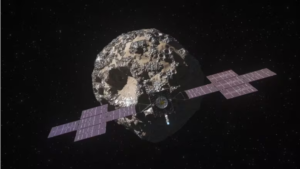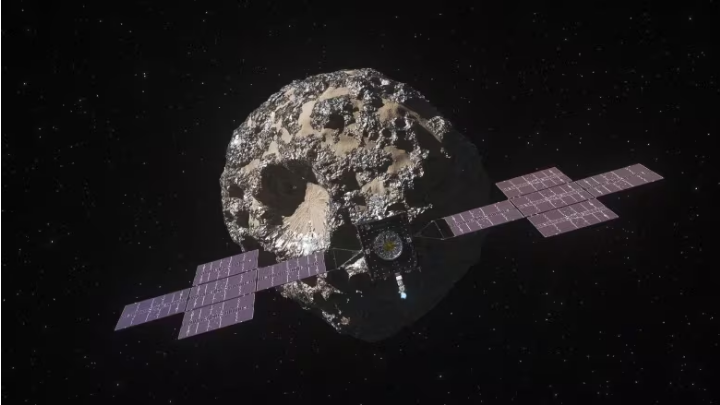If we could mine the asteroid, it could be worth $10,000 quadrillion (yes, that's a real number)Hot on the heels of the sample–return mission from an asteroid named Bennu, NASA is preparing to launch a spacecraft to yet another asteroid.

The Psyche mission — named after the asteroid it's planning to study — is set to blast off on Thursday atop a SpaceX Falcon Heavy rocket from Cape Canaveral, Fla., where it will begin a six-year journey to its home in the asteroid belt.
Once it arrives, it will continue to orbit Psyche for two years, where it will study things such as its composition, age and topography.So why is NASA heading to yet another asteroid?As always, to better understand Earth.
Earth is made up of three layers: The crust, the mantle and the core. But because the core lies so deep within the planet, we know virtually nothing about it. But out in the asteroid belt, home to a million objects or more, all left over from the formation of our solar system 4.5 billion years ago, may lie clues in the form of metal-rich asteroids. And Psyche is just one of those objects.
To date, astronomers have only been able to get information about the asteroid, offically named 16 Psyche, from NASA's Hubble Space Telescope and the now-retired airborne Stratospheric Observatory for Infrared Astronomy (SOFIA) telescope.
But from that they've learned that the 280–kilometre wide, potato-shaped asteroid is likely metal-rich, unlike any asteroid we've ever visited. “We have probably two million or more objects in our solar system,” said Lindy Elkins-Tanton, principal investigator of the Psyche mission. “We get kind of focused on the big planets, but there's an awful lot more of these smaller objects. And they come in all different flavours and types. And they tell us different parts of the solar system story.”
In particular, scientists want to understand how the cores of rocky planets like Mercury, Venus, Earth and Mars formed and what they might look like”If you want to find out about metal cores, this is our very best bet,” said Elkins-Tanton, who is also a professor at Arizona State University's school of Earth and space exploration.
“Because we cannot go to the cores of any of our rocky planets — way too hot, way too much pressure — but they make these magnetic fields that keep our atmosphere safe and give us guidance and have a really important aspect of habitability.”
.

